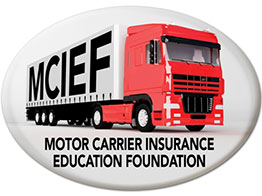Making Yourself More Marketable to Shippers
December 5, 2019Cargo Insurance & Coverage
January 3, 2020ATRI Operational Costs for Truckers
Tommy Ruke – aka The King Pin — of the Motor Carrier Insurance Education Foundation knows his stuff and loves the opportunity to share information with trucking companies that want to make a difference, for their customers in particular and for the transportation industry in general. Here’s the lowdown on the ATRI Report on Operational Costs for Truckers from one of the consummate leading experts in truck insurance.
The ATRI analysis of the operational costs of trucking is a 2019 update that reflects 2018 operating costs. To download the full report at no cost, go to truckingresearch.org.
Each year, ATRI reports on a survey they conduct. You need to understand who responds and how their information is used. First, ATRI is an affiliate of the American Trucking Association, so their research is for large interstate fleets (private and for-hire).
| Sector | Respondents |
|---|---|
| Truckload (TL) | 37% |
| Less-than-Truckload (LTL) | 42% |
| Specialized/Other | 21% |
| Risk Size | Respondents |
|---|---|
| 0-5 | 6% |
| 5-25 | 15% |
| 26-100 | 29% |
| 101-250 | 11% |
| 251-1000 | 21% |
| 1000+ | 18% |
Results are therefore a reflection of the 79% of motor carriers with more than 26 power units.
Equipment
Average age of power unit – 4.4 years
Average miles – 91,506 – A little higher than last report
Replacement – 7 years, 700,000 miles
Overview of results
Increased costs from 1.691 in 2017 to 1.821 in 2018 – 7.7%
2018 was a “very” good year as far as hauling rates are concerned, as was most of 2017 the year before that. The concern is that 2019 has not been as “good”. It has been characterized by more capacity, a reduction in demand and less revenue per mile, so if insured does not pay close attention to cost and usage, they will soon have concerns.
The three areas of cost an insured (motor carrier) has little, if any, control over are the three that have increased the most.
| 2017 | 2018 | Increase | |
|---|---|---|---|
| Fuel | 0.368 | 0.433 | 17.7% |
| Driver pay | 0.557 | 0.596 | 7% |
| Insurance | 0.075 | 0.084 | 12% |
The pressure will be on smaller motor carriers and particularly new ventures that do not have control over cost.
To offset the increases in cost, a typical business plan will push the cost back to the customers. Trucking is different, since there is no control of cost and little, if any, control of revenue per mile. The revenue per load/mile depends on demand as reflected by the “spot” market rates (these are typically brokers/load board rates). Rates are down this year and it appears that they will keep sliding down; not a lot, but enough that they may cause problems for small Motor Carriers who do not or cannot get contracts from Shippers.
Based on the $1.821 a unit, 100,000 miles a year, it costs $182,100 to keep a unit on the road with no backroom cost/location cost, bad debt/profit (if any). Typically the motor carriers need $2.40 to $2.50 per mile rates. Remember that this is paid for only in loaded miles, not empty (unladen) miles.
Revenue per unit needs to be $225,000 to have any return on investment and time for an over 300-mile radius operation with one driver per unit.
This information will hopefully give you some important general knowledge as you deal with insureds. For more of the interesting facts in the report, go to https://truckingresearch.org/ and download it.
Tommy Ruke, Motor Carrier Insurance Education Foundation

